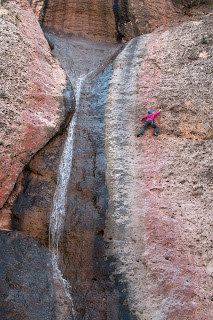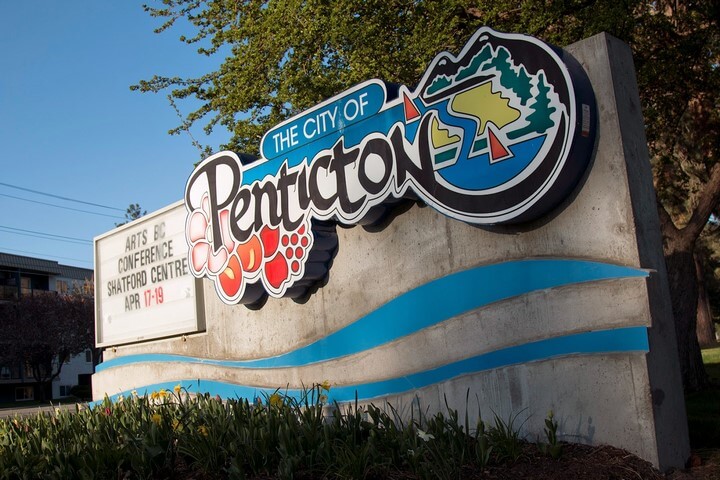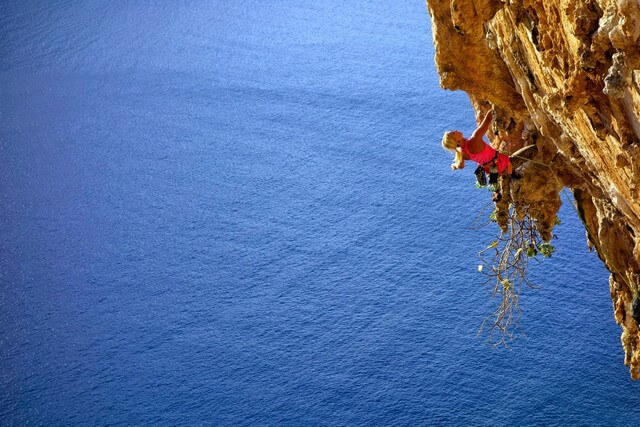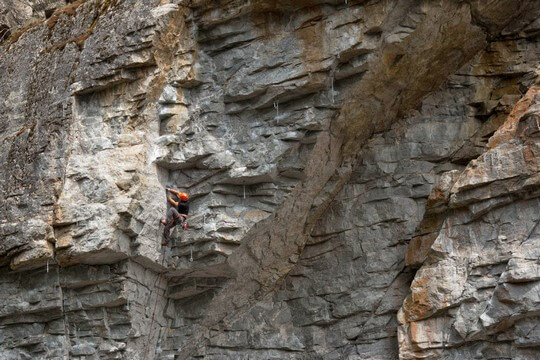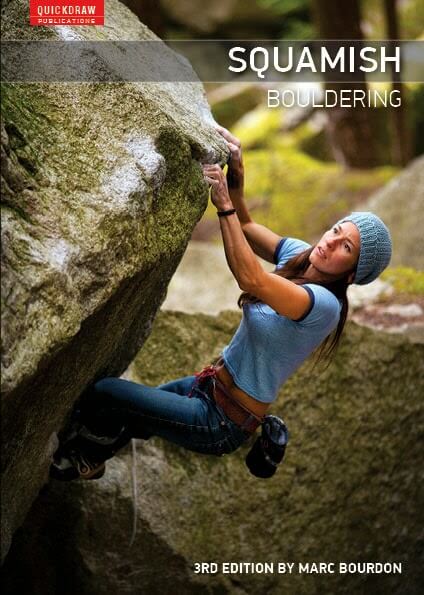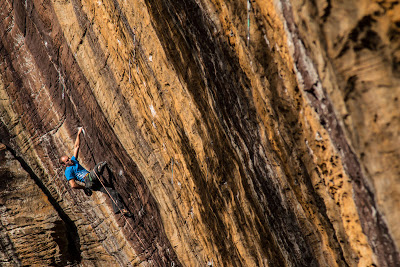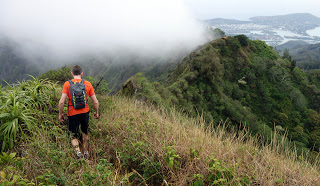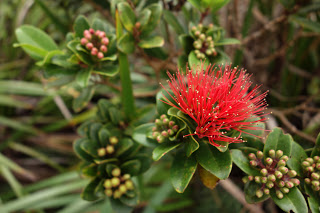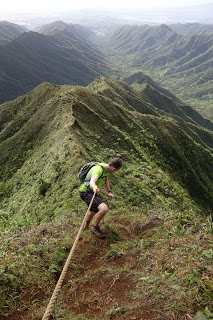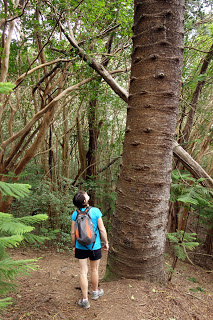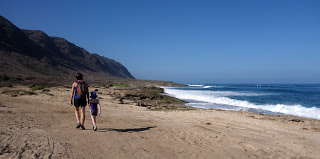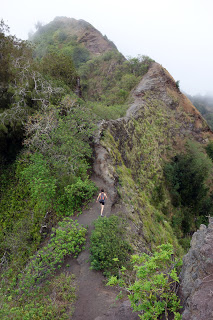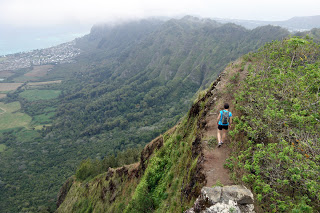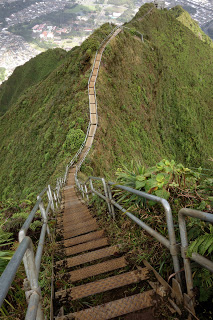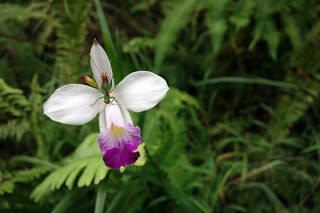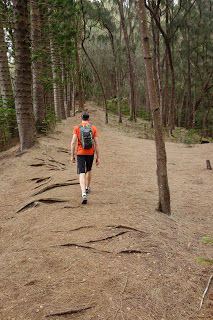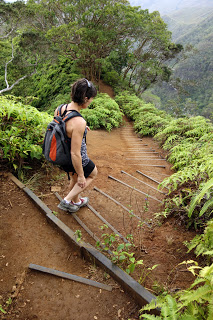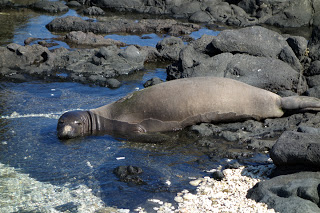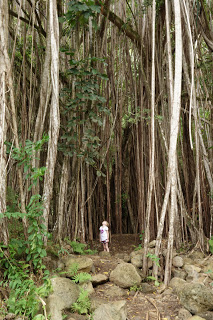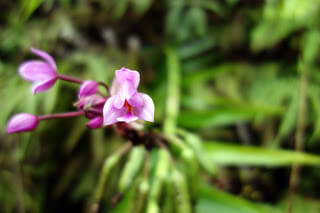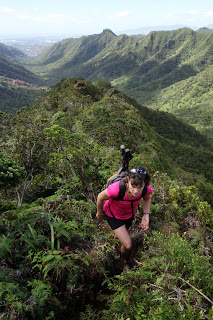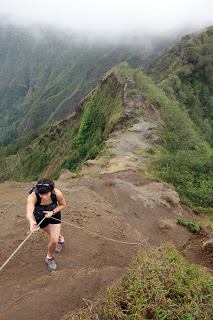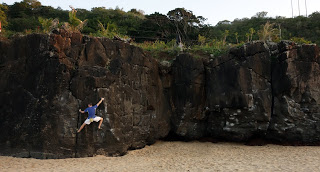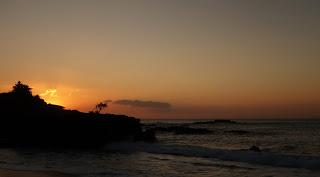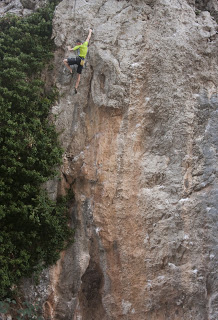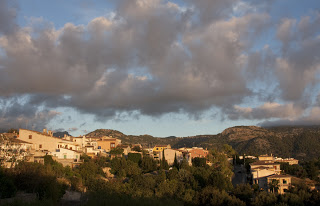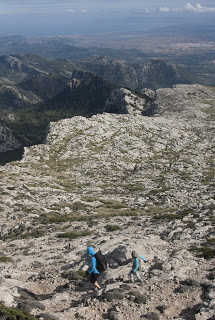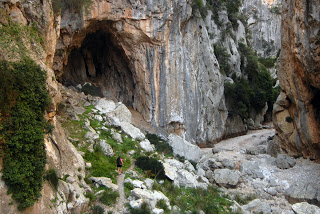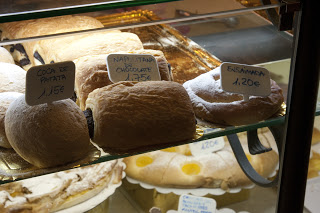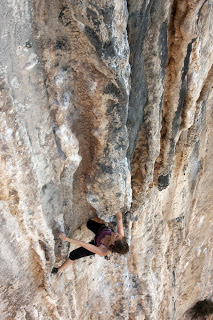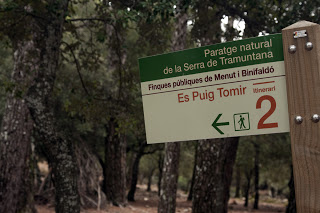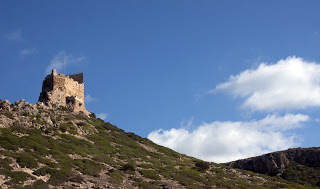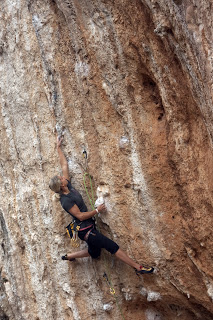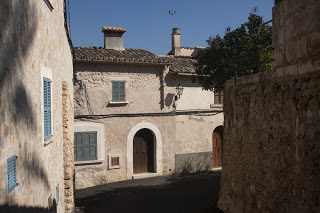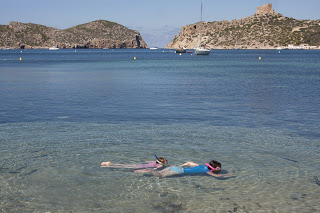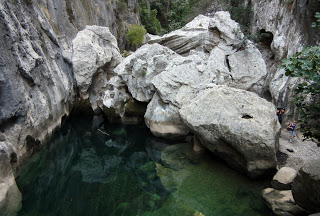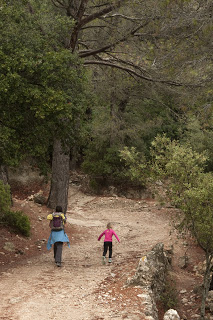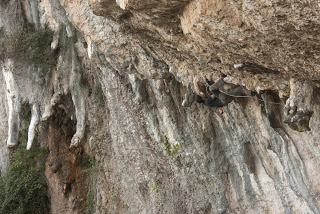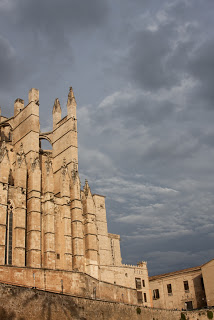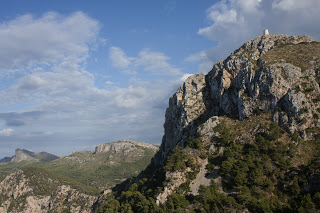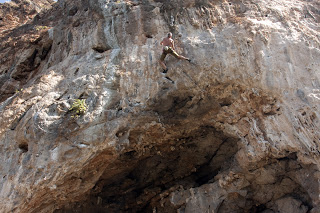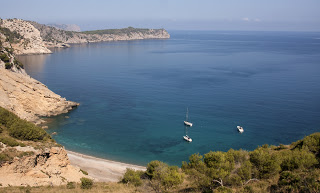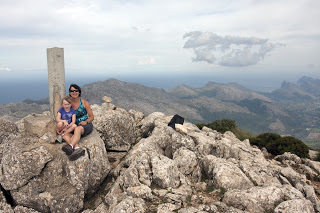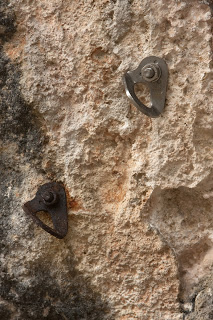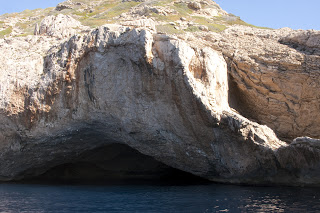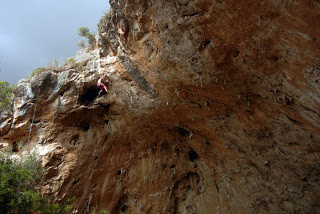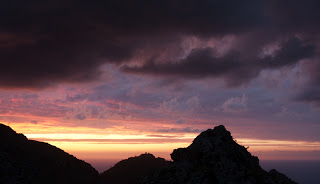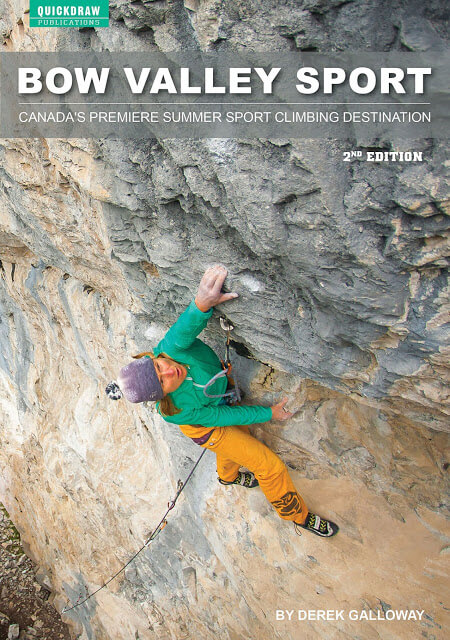
|
| Irene Tos on Stepping Stone (5.13b) at The Lookout. Photo: Greg Tos. |
Showing posts with label Marc Bourdon. Show all posts
Showing posts with label Marc Bourdon. Show all posts
Friday, September 29, 2017
Bow Valley Sport Guidebook - Second Edition
The second edition of our popular title, Bow Valley Sport, has just been released and is available on our website, quickdrawpublications.com. The Bow Valley is arguably the best climbing area in Canada for summer conditions and the vast limestone cliffs provide superb face climbing at every level. All the best areas are found in this book, including pocket-infested 5.8s at Grassi Lakes, immaculate 5.10 quartzite face climbs at Lake Louise and physical 5.12-5.13 overhangs at the The Lookout. Round this out with some superb multi-pitch sport climbing and you've got a great vacation on your hands. But don't just come to the Bow Valley for the climbing. Enjoy wildlife viewing, alpine hiking and refreshing swims in one of Canada's most gorgeous mountain environments!
Friday, March 17, 2017
Winter Climbing in Cuenca, Spain
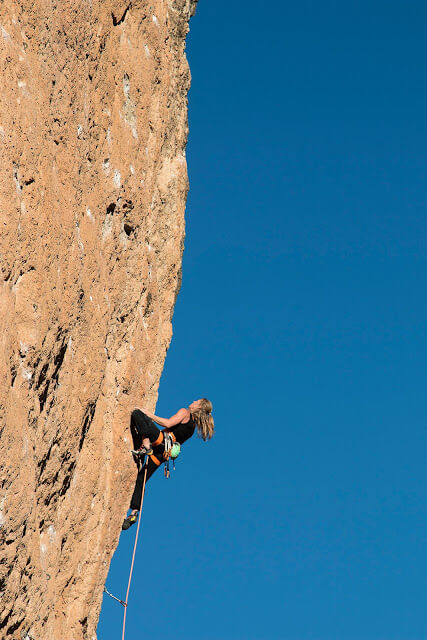
|
| Classic arête climbing on Cabe Esperar (8a) at Sombretivo. |
Labels:
climbing,
Cuenca,
Marc Bourdon,
Spain,
winter sport climbing
Friday, November 11, 2016
Weekend on Empetrum Peak
Garibaldi Provincial Park protects almost 2,000 square kilometres of rugged alpine wilderness just north of Squamish and provides world-class hiking, mountaineering and skiing objectives for locals and tourists alike. The majority of the park is virtually impenetrable, but a few well-developed access points between Squamish and Whistler allow outdoor enthusiasts to explore some of the region's gorgeous, alpine terrain. The iconic volcanic peak, Black Tusk, is one of the area's major draws, and shortly before the fall rains settled onto the B.C. coast, we made an exploratory trek up Empetrum Peak to see the Tusk from a new perspective.
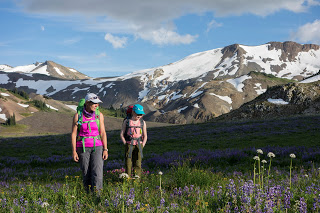
|
| Garibaldi Park |
Labels:
Empetrum Peak,
Garibaldi Park,
Hiking,
Marc Bourdon,
squamish hiking,
Trion Light,
Whistler
Friday, August 19, 2016
Vancouver Rock Climbing
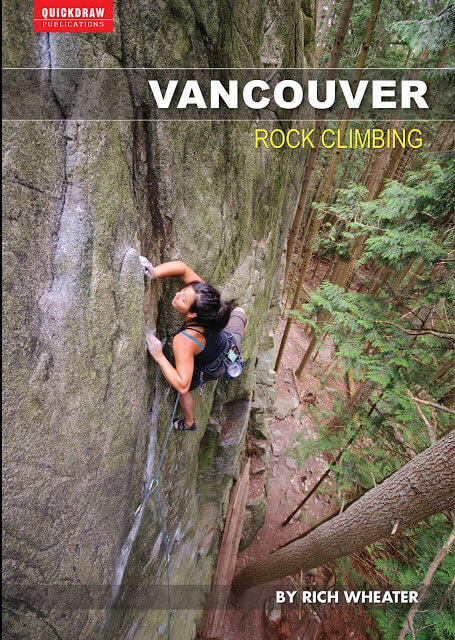
|
| The new guidebook... |
Friday, April 1, 2016
Winter Climbing in Leonidio, Greece

|
| Leonidio, Greece |
Labels:
climbing,
Greece,
Leonidio,
Marc Bourdon
Wednesday, January 6, 2016
Squamish Mountain Life
A hot, hazy summer transitioned into a glorious fall in Western B.C., and this past season provided ample opportunity to complete my research into Squamish's best hiking and scrambling destinations. I logged many kilometres in hiking boots this summer, gave my suite of Mammut backpacks a full workout, and found myself in some new and beautiful locations, once again proving that Squamish is much more than simply a world-class rock climbing destination.
I hope you enjoy the pictures, all of which were taken within a 30-km radius of town.
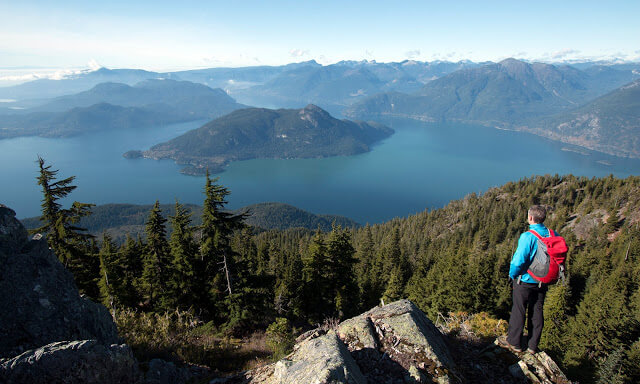
|
| Howe Sound from the west ridge of Deeks Peak |
Friday, October 30, 2015
Ten Sleep Tips
Ten Sleep Canyon is a popular summer climbing destination. This Wyoming cragging area sits at high elevation and provides reasonable climbing temperatures throughout July and August. After a three-week trip this summer, I thought I'd share a bit of information that we found helpful when visiting the area.
Tuesday, July 21, 2015
Dodging the Rain.
When early season rains dampen Squamish many climbers flee to the Okanagan, a dry belt on the east side of the Coast Mountains. Near the city of Penticton is an extensive cragging area, Skaha Bluffs, that offers close to 1,000 single pitch climbs on beautifully featured gneiss. The nature of the climbing is varied and the dozens of excellent cliffs are connected by a pleasant network of hiking trails. Spring and fall are the prime seasons; summer is crazy hot.
Labels:
Go Warm,
Mammut,
Marc Bourdon,
Skaha,
Snow Zip,
sport climbing
Tuesday, December 23, 2014
Kalymnos, Take 3
Labels:
climbing,
Greece,
kalymnos,
Marc Bourdon,
sport climbing
Monday, June 2, 2014
Life in Skaha
Skaha is a vast single pitch climbing area in the Okanagan region of British Columbia. Since the climate is very dry, rain beaten coastal climbers make regular weekend trips. Easter is the most popular time of year due to the statutory holidays and typically wet (or snowy) conditions found elsewhere in the province. This year, we joined the throngs of climbers and enjoyed three days of pleasant cragging. The camping on the lake shore is scenic and the sport climbing is excellent, with hundreds of quality face routes on crisp orange edges and white-washed overhangs. Next time you're getting rained on in Squamish, consider a quick side trip to Skaha to dry out your gear and work out your muscles!
Labels:
Mammut,
Marc Bourdon,
Penticton,
Skaha,
sport climbing
Wednesday, May 7, 2014
Squamish Bouldering Guidebook - Third Edition
After more than six months of work, the newest edition of Squamish Bouldering is finally complete. This is the third installment of the guide and it now contains over 3,000 problems, 500 more than before. I grossly underestimated the amount of time this project would take. I'm still trying to figure out what happened, but I'm guessing the good climbing conditions in January and the great skiing in March had something to do with it. Regardless, the printing of the new book should be complete by late June.
The bulk of the new problems are in the North Walls zone, but some previously unpublished areas, including Cat Lake, Short Stories and Shannon Falls, will provide plenty of fresh terrain to explore. Our new Quickdraw Publications website should be live in the next couple of weeks and ordering will be available on-line. As always, I welcome feedback on any aspect of the book. Get in touch if you have anything to say.
Enjoy the new boulders!
Marc Bourdon - Squamish, BC
http://www.quickdrawpublications.com/
Monday, December 23, 2013
Realization Shorts and Steep Sandstone
The Red River Gorge is one of the United States' best sport climbing areas and there's no better time to visit than in the fall. If you don't mind cold nights, November is a great month. The leaves are in full colour, the humidity is relatively low and the temps are perfect for climbing.
Tuesday, July 23, 2013
Squamish Hiking
In between climbing projects this spring, I started researching a new hiking guide to Squamish. This has turned out to be a fantastic opportunity to explore the wilderness around Squamish, which is vast. I've lived here for over 20 years, but am seeing places I've never eyed before. I've got many hikes left to do, but hope to have the book ready for 2014.
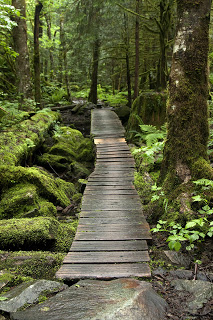
|
| Boardwalk in Crumpit Woods |
Labels:
backpacking,
Chief,
creon,
Hiking,
Marc Bourdon,
rainer jacket,
squamish
Friday, January 4, 2013
Hiking Hawaii
With all the rock climbing cliffs on the island of Oahu currently closed due to liability concerns, we were forced to look elsewhere for outdoor activities during our Christmas visit. Watersports are the obvious choice in Hawaii, but what many don’t realize is the islands are lush with amazing hiking options. Jungle walks, coastal strolls, knife-edge ridge climbs and dormant volcano explorations make for a varied and engaging collection of adventurous outings.
At first blush, the hiking objectives may seem relatively non-threatening, but the climate is hot and potentially wet so packing properly is key. Sturdy shoes that can handle mud come in handy, lots of water is a must, bug spray for the forest can be a lifesaver, and lightweight, breathable clothing is necessary to keep you comfortable. Some locals wear pants for wading through thick brush, but my legs survived in shorts. I was glad to have my Aegility Shirts to keep me cool and protected from the sun, and all my gear fit neatly in the Neon Light pack - the perfect lightweight choice for hot-weather hiking.
Hikes that we did that I’d recommend were Ka’ena Point, a five-mile deserted beach walk from Kahuku to the Turtle Bay Hilton, the Kuli’ou’ou Ridge trail and the Moanalua Valley to the top of the so-steep Haiku Stairs. All were unique and we saw great terrain in varied parts of the island, including an endangered Hawaiian monk seal.
If you find yourself in Hawaii and enjoy getting sweaty in wild outdoor environments, be sure to throw in your hiking kit. And if the crags remain closed, don’t despair as there’s always the basalt bouldering at the back of Waimea Bay to keep your fingers in tune.
Marc Bourdon – Squamish, BC
At first blush, the hiking objectives may seem relatively non-threatening, but the climate is hot and potentially wet so packing properly is key. Sturdy shoes that can handle mud come in handy, lots of water is a must, bug spray for the forest can be a lifesaver, and lightweight, breathable clothing is necessary to keep you comfortable. Some locals wear pants for wading through thick brush, but my legs survived in shorts. I was glad to have my Aegility Shirts to keep me cool and protected from the sun, and all my gear fit neatly in the Neon Light pack - the perfect lightweight choice for hot-weather hiking.
Hikes that we did that I’d recommend were Ka’ena Point, a five-mile deserted beach walk from Kahuku to the Turtle Bay Hilton, the Kuli’ou’ou Ridge trail and the Moanalua Valley to the top of the so-steep Haiku Stairs. All were unique and we saw great terrain in varied parts of the island, including an endangered Hawaiian monk seal.
If you find yourself in Hawaii and enjoy getting sweaty in wild outdoor environments, be sure to throw in your hiking kit. And if the crags remain closed, don’t despair as there’s always the basalt bouldering at the back of Waimea Bay to keep your fingers in tune.
Marc Bourdon – Squamish, BC
Labels:
Marc Bourdon
Sunday, October 28, 2012
Sport Climbing in Mallorca
Much has been written about the incredible deep water soloing in Mallorca, but what many seem to forget is this Mediterranean island was once a famous sport climbing destination. European climbers have been coming here for decades and after years of indecision we decided it was finally time to take a risk and check it out for ourselves.
What we found was an island lush with amazing stone. As you drive the incredible mountain roads, vast walls of tufa-streaked limestone poke out from the many valleys and sheets of grey, water-worn rock blanket the ridges and barren peaks. A friend of mine compared the climbing in Mallorca to a miniature European continent and the comparison was apt, I thought. There are many different climbing venues and all have a distinct flavour, much like you’d find travelling form crag to crag across various European countries.
Conditions play a big factor in planning a trip, and which month you choose determines where you’ll likely climb. We arrived in late September and it was hot. Aside from fantastic swimming and snorkeling in the crystal clear coves, the advantage to this time of year is the north-facing mountain crags are free of seepage and in good condition. October, strangely enough, is the rainiest month of the year in Mallorca, but this is when the temperatures start to cool which opens up more options. We experienced somewhat tumultuous weather, but in the end we were able to climb at all the crags on our hit list. Locals claim May is also a good month for a visit because the weather is stable and starting to warm, but I question how dry the high elevation tufa crags would be at this time of year – seepage can be a problem.
Despite the vast amount of rock in Mallorca, much of it is on private land, a condition that plagues local climbers. Incredible cliffs have been closed over the years and some of the best sites on the island remain intensely protected secrets due to their tenuous access situations. Unlike North America, Spain has no organized access groups to work on behalf of climbers, so good crags can be easily lost forever. The guidebook is full of quality cliffs that are free of problems, but we were lucky enough to climb at a few out-of-the-way spots thanks to the help of the friendly Mallorcans. Be inquisitive, show respect and they’ll point you in the right direction.
From a travelling perspective, Mallorca is well equipped since it’s a major tourist destination. We chose to stay in a traditional inland village and were glad we did. It was quiet and culturally interesting, yet we were only 15 minutes from a fantastic beach. Renting a car is easy, and if you stay centrally nowhere on the island is more than a one-hour drive. The Lonely Planet guidebook and Walking in Mallorca were invaluable additions to our luggage as they provided excellent beta on touring the island and exploring the fabulous network of groomed trails.
The only real downside to our Mallorcan climbing experience was the presence of corroded bolts. The maritime environment has rendered some routes practically unclimbable and this factor was glossed over in our guidebook. Luckily, the most popular climbs have usually been rebolted (sometimes two times!) and the newer areas are in better shape. For current route information, visit the Palma climbing store Foracorda. The employees are very helpful and their website, Foracorda.com, has a page devoted to topos for popular cliffs, some of which aren’t in any guidebooks.
Having been to Kalymnos twice, we found ourselves constantly drawing comparisons between it and Mallorca. We decided that for sheer density and quality of climbs Kalymnos is hard to beat, but for non-climbing activities Mallorca takes the prize. It’s a truly beautiful island with a rugged coastline that begs exploration, both on foot and in the water. Plus, I can almost guarantee you’ll never have to wait in line to climb one of their excellent, popular routes. Try going to Kalymnos in October and making that claim!
Marc Bourdon – Squamish, BC
Labels:
Mallorca,
Mammut,
Marc Bourdon,
sport climbing
Subscribe to:
Posts (Atom)

